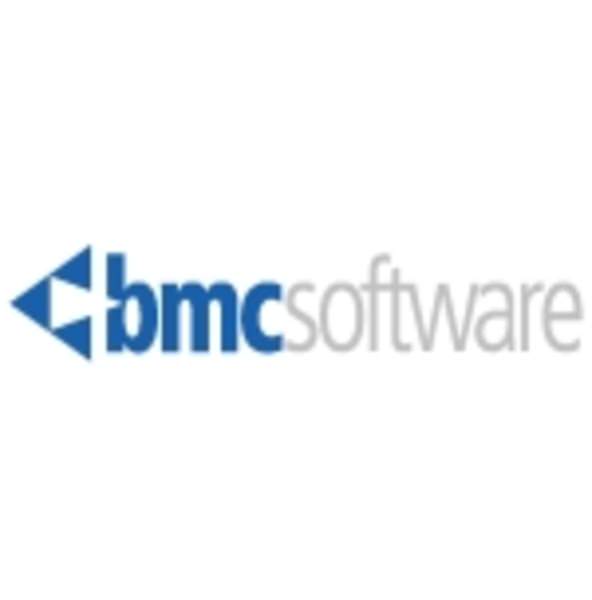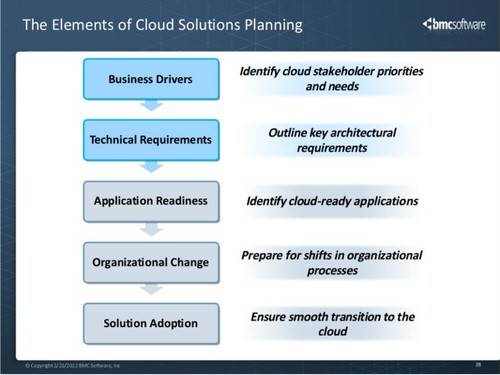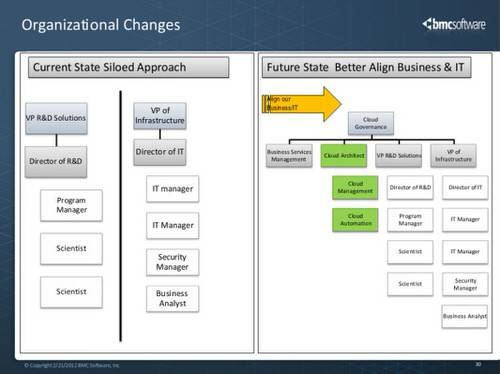Has your business already begun its cloud migration… and you were the last to know about it? In a nationwide role-playing event this afternoon, managers from BMC Software paired with independent analysts and members of the media, to recreate the hypothetical situation of a pharmaceutical company that had been planning a cloud migration, only to find its R&D division had already deployed its key application – and the business assets to go with it – to the public cloud.

This is the situation more and more businesses are facing: not moving their assets out of the data center and into a public or hybrid cloud, but rather gathering up those assets that have already been moved, and bringing them back under the firewall and back into compliance.
I am not an actor, though I’ve played one on stage. Today, I portrayed a junior member of the pharmaceutical firm’s R&D team (it’s been a long time since I’ve played a “junior” anything). Taking a page out of a real scenario I encountered, I threw a curve to the other members in the role-playing exercise. I played it out as though I had been the driving force toward the selection of a cloud service provider that would host R&D’s application while the IT department struggles with creating cost estimates and running simulations. In our scenario, IT had dragged its heels for close to a year, while R&D was already well under way.
But by “going rogue,” R&D was in danger of being found non-compliant with federal regulations on drug safety, at the very least, and in violation of several laws at most. I defended my “decision” by saying I had closer contact with this particular cloud company than with anyone at IT, and although they were in a foreign country, I could always wake them up (or their moms) at any hour of the day.

The exercise demonstrated the problems any organization faces where two departments find themselves on opposite sides of the same project, and at loggerheads over who’s in charge. While this could have been the optimum opportunity for BMC to demonstrate its Cloud Lifecycle Manager, instead the crew at BMC concentrated on the business and consulting services it provides to customers, which include real-life workshops (not role-playing exercises, like the one today) that often take the form of Gestalt therapy sessions.
If you’re considering one of these workshops for your own company, you might expect to come away from it having learned the following:

1. Migrate with the right intentions. The reasons companies cite for making their cloud migrations may actually differ from reality. Whereas pollsters have concluded the key reason is cost savings – especially the shift from capital to operating expenditures – in many organizations the factor is time. Many CSPs can provision an entire business department in about two days’ time, which certainly beats several months, especially for departments that have “gone rogue” like the one in our exercise.
But some of those CSPs aren’t exactly as ethical as your average Amazon or GoGrid. The allure of getting a big project in a next-to-now timeframe has driven some departments that would ordinarily rely on IT, to instead circumvent IT. This is dangerous for any number of reasons. Don’t let time compel you to take unnecessary risks.
2. Separate your customer-facing services from your internal ones. At the same time, it should not be the IT department’s sole job to design, implement, and market the business services that your enterprise may be delivering to your customer.
One of BMC’s partners in these workshops, supply chain management service JDA, reorganized itself recently with this clear goal in mind: Have one team face the public. This team, which was formed out of the old Managed Services division, became the Cloud Services division. John Frazier, JDA’s VP of Cloud Services, explained today that a business unit should have one customer. When an IT department is tasked with complete responsibility for cloud services, it ends up with two customers: its own company, and the one with which it does business.
3. Tether your internal and external services to one executive.
The #1 road block preventing businesses from going forward with a manageable cloud migration, BMC’s cloud consulting services director Alan Chhabra told me today, is a reluctance to reorganize. I know what you’re thinking: Insert the usual message about striking down the silos here.

Well, if you read item #2 above, you know that departments are sometimes compartmentalized for good reasons. BMC advocates a business department realignment where customer-facing information services and company-facing ones report to a common executive authority.
“The champion has to be at the highest level,” Chhambra tells me, “an executive who has the vision.” Folks participating in BMC’s workshops often ask Chhambra whom they need to hire, expecting that person to be outside the organization. “Two years ago, we had no answer,” he admitted. “Based on doing this hundreds of times, we now have a good answer. I agree that the optics of showing this to a customer is critical. Many of them don’t like looking at org charts, because it can open some wounds. So we do like to have this discussion at the CxO level, and then the CxO will go down and see if he can execute it amongst his lieutenants.”
4. Start with a shorter timeframe. If you want a migration plan to stretch out over longer than six months for sure, project where you expect your company to be (what BMC calls “future space”) in five years’ time. Contrary to all the logic you may have heard to date, BMC prefers a narrower timeframe – for its own workshops, projecting no longer than 18 months.
Why? There are too many volatile factors in the information market that are still at play. Imagine how data centers conceived the future just 18 months ago. Was Hadoop and big data even part of their outlook? Was the prospect of sharding data over multiple servers even considered feasible? Too much is changing, and it’s reasonable not to expect that the factors governing the current state of affairs will have been completely altered by 2014.
5. Set your consultants free as soon as possible. Many vendors set themselves up as permanent partners in your business endeavors, which seems nice at first until you come to realize you’re done with the handholding. “If we’ve done our job effectively, we can transition the roadmap to stakeholders within the organization,” says BMC’s cloud strategy architect John Hawkins today. “We don’t want to be the agent of change, making all those organizational changes. They’re looking for our feedback on their cloud strategy and operational models, so that they can be self-sufficient in providing cloud within their organization.”
Alan Chhambra adds that BMC builds tools for its clients, which it calls “calculators,” to help them gauge the precise point in time when this transition may be considered done. They’ll see the basic metrics, such as the increase in response time for server provisioning, with the goal of demonstrating savings goals in as soon as 12 months. The keyword here remains “months,” not “years.”










